Morgan’s all-new Super 3 is more than a reborn 3 Wheeler
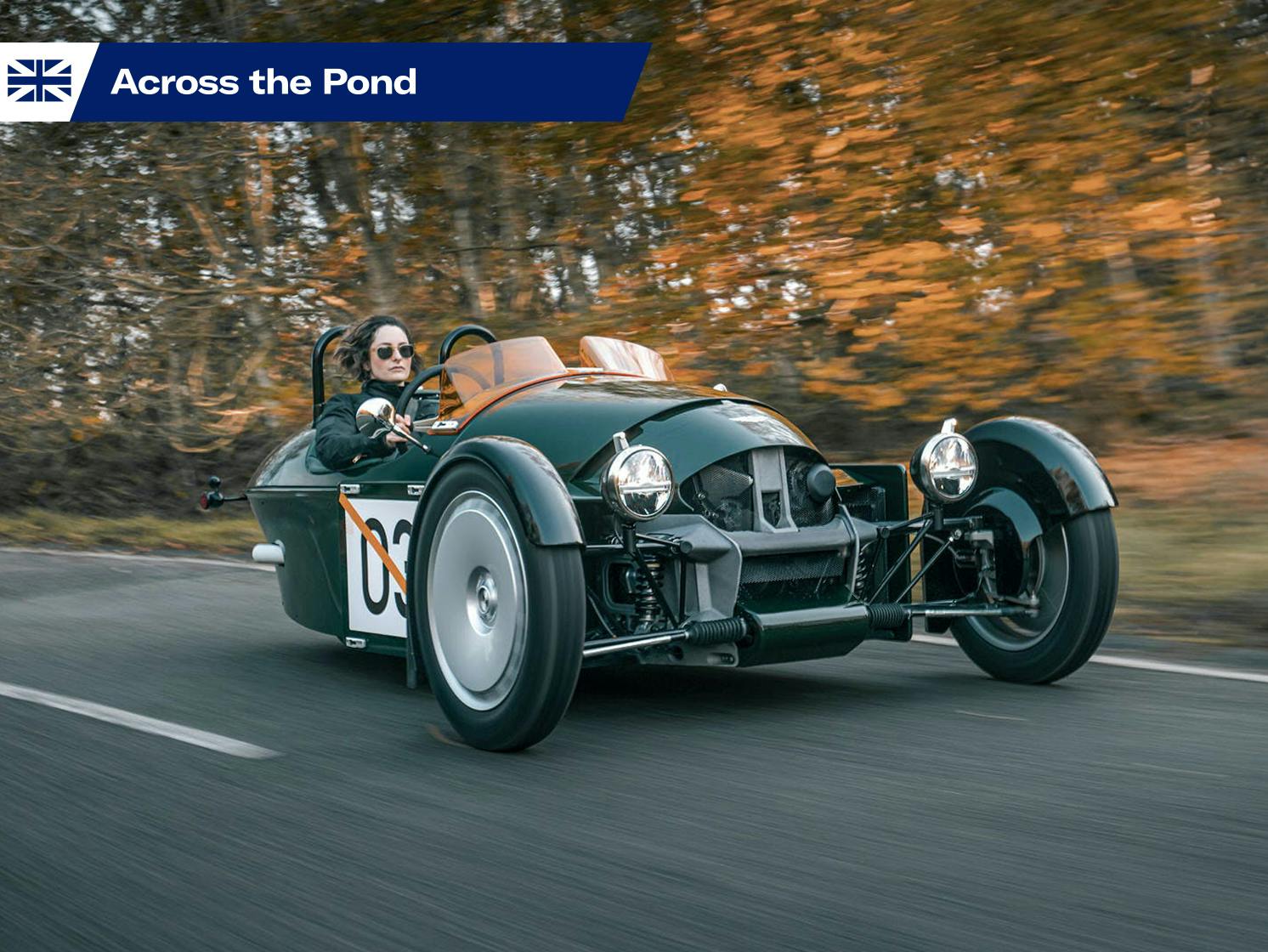
If you can tear your eyes away from these wonderful images of Morgan’s all-new Super 3, the successor to the 3 Wheeler, then I’d be happy to explain how the British boutique outfit has utterly transformed its iconic model into something both traditional and modern.
First, some history. The Morgan Motor Company was founded on three wheels. HFS Morgan’s Runabout of 1909 was 50 percent more practical than a motorcycle, and 25 percent more exciting than a motorcar. The Super 3 promises more of that mischievous sense of adventure.
The original three-wheeled Mog lasted for four decades, and it was reintroduced in 2011 as the much-loved 3 Wheeler. That car eventually fell foul of emissions regulations, starting with 82 hp and ending up with 60-something depending on the measurement method. The electric EV3 was, at the time of its debut in 2016, an evolutionary dead end despite lots of speculative orders being placed. So, just as Morgan went back to the drawing board with its Plus Four, it had to reinvent the 3 Wheeler. The Super 3 is the end result.
Morgan has addressed emissions targets by employing Ford’s cracking little three-cylinder engine, that is Motorcycle Euro 5a and Euro 5b complaint and includes OBD functions. That gives the Super 3 a lifespan to at least 2030, in theory.
The three-cylinder engine is mated to the usual Mazda-sourced five-speed gearbox, and the quirks of the previous model’s drivetrain have been discarded or re-engineered. There’s no compensator, this time, and the bevel box has a custom tooth profile that you now won’t hear over the distinctive note of that three-pot engine.
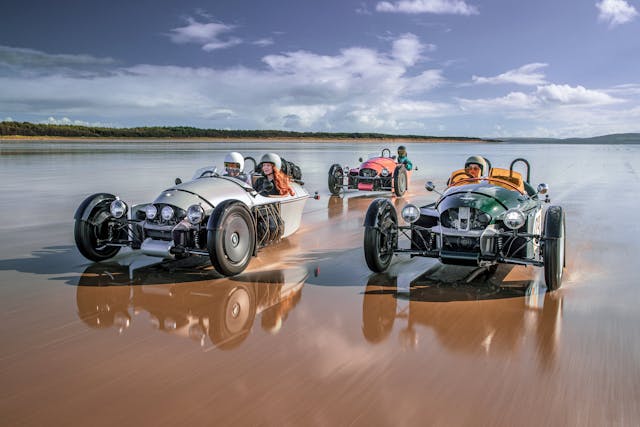
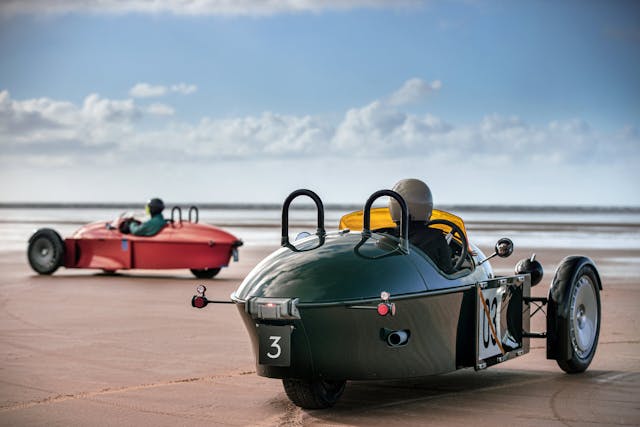
A visit to Morgan’s skunkworks (called “M Deck”) is always interesting. The factory is open to the public and I’ve been fortunate enough to spend time admiring skills on the English wheel, leatherworking, and bashing life into raw materials to create those iconic Morgan shapes. But the Super 3 is a totally new formula and the cars you see here at launch were built in M Deck, a separate building far from public gaze.
The Super name points to the superformed monocoque platform. Think aluminum, bonding, rivets… Colin Chapman would be into this. You get the feeling that Morgan employs people like us, making cars for people like us, and it’s fun to be in the presence of it. This is the second Morgan to be built on a superformed monocoque platform and the company’s first clean-sheet design since the Aero 8 of 2000. (The recent Plus Four is said to be “only” 97 percent new, but only because items like the bonnet catches are carried over.)
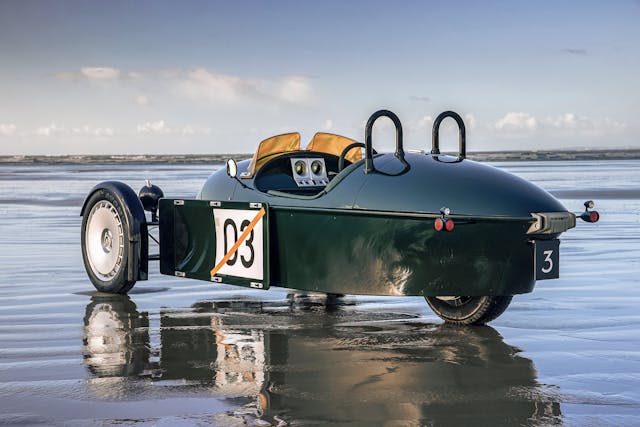
Chris Arthur, Chief Engineer for the Morgan Motor Company, believes the Superform tech has liberated the company. “The Morgan Super 3 represents a new level of engineering integrity for Morgan,” explains Arthur. “Superform techniques have allowed us to achieve something that is typically out of reach for niche manufacturers. The monocoque platform is light, stiff, strong and resilient and looks good.”
There’s a slight weight penalty compared to the outgoing 3 Wheeler, as the Super 3 carries 85 kg (187 pounds) more than the previous model, but to be fair the water-cooled trike carries two radiators, and is 38 cm (15 inches) longer. It’s a totally new car.
The aluminum platform will eventually carry an electric version. For now, Super 3 is gas-powered, and one of the interesting engineering challenges was reviving an engaging sound and vibration characteristic that Ford had done its best to eliminate.
Ask about the possibility of forced induction, as used with this block in cars like the Mk. 8 Fiesta ST, and the engineers shake their heads. This engine makes 118 hp already at a revvy 6500 rpm, the trike will 62 mph in seven seconds and will max out at 130 exhilarating miles per hour. Having done 90 in the outgoing model, I really don’t see the need to go faster.
The Super 3’s design is supposed to conjure thoughts of the early jet age and the joy of international travel. To that end, Morgan was inspired to add potential for modifications based on what it had seen owners of the last model do to their cars. If you’ve ever overtaken an old Morgan saddled with luggage on a Route nationale, as I have, you can’t have helped but think that a better solution than bungee cords is required.
Jonathan Wells, Head of Design, Morgan Motor Company, describes the typical owner as “adventurous.” “Morgan 3 Wheeler owners are individual, relish doing things in their own way, and actively seek adventure,” says Wells. “With Super 3, we aimed to exaggerate these qualities through design. Super 3 stands out as something different.”
There are now options galore. You can specify windscreens in a yellow tint, there’s a Pittards water-resistant leather option for the seats, and the interior is IP-rated even down to twin USB sockets. The striking coral paint might not be my first choice, but I’m inspired to create my own take on design with the configurator which goes live soon. I like how the body has the appearance of being towed by those front wheels, the upturned profile of the trunk (which opens, you’ll get a squashy bag in there), and the LED headlamps which combine retro looks and modern, reliable tech.

The 20-inch wheels are a Morgan design, inspired by belly tank racers, and have aerodynamic benefits of reducing buffeting in the cabin and directing cooling to the radiators behind. All of this is new ground for Morgan. The front suspension wishbones are engineered to be as long as possible, and the brakes set far apart, giving greater ride quality and handling than before.
The Speedmaster tires are bespoke, developed in conjunction with Avon, and there are other firsts. This is the first Morgan to be constructed without the use of wood. The Super 3 was designed using CAE and underwent far more rigorous testing than any previous model. The engine now sits deep beneath a ducted cowl.
Options include a cupholder, phone holder, and other cool fittings which slot onto patented rails inside and outside the cabin. The Super 3 is designed to be the most configurable Mog yet, with Malle London panniers, saddle leather, and a feeling of quality in everything you touch.
I gently levered myself into the prototype. There’s a navigation unit from Beeline, a lovely halfway house between a conventional, and (let’s face it) ugly screen, and the hassle of a flapping paper map. It’s a kind of compass which sits on the steering column cowl, pointing the way. Speaking of plastic, that cowl is the only piece of the stuff I found anywhere in the cabin.
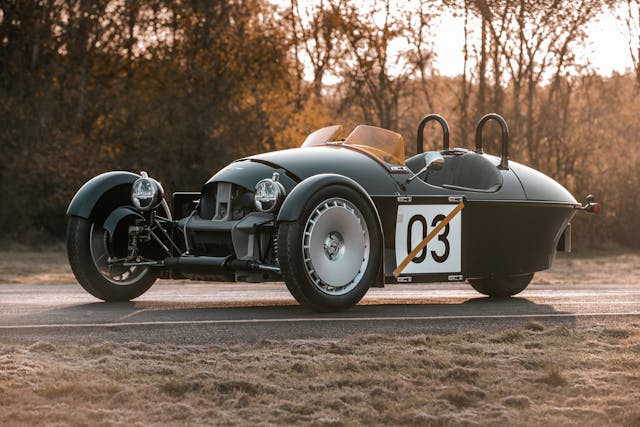
The gauges are now digital, set in metal housings, and the rev counter has a cool retro appeal. The sideblades, hanging off those rails, can be adorned with race roundels (c’mon, who doesn’t love a roundel set against British Racing Green?), hard cases and 18-oz. wax canvas panniers for the road-trippers among us.
Morgan has made a thoroughly modern machine built on a brilliant heritage, with pricing starting at £41,995 ($57,000)—that seems just about right for the market it’s dropping into, and a logical step on from the 3 Wheeler. It should land in the U.K. toward the middle of 2022, with arrival in North America beginning in the year’s fourth quarter.
One option buyers sadly won’t get: the owl sticker we saw flitting around Morgan HQ and in some images we were shown of the Super 3. This is a mascot adopted by company engineers, designed to be wise, all-seeing, and inspired by a stuffed owl they used to keep in the factory to keep pigeons at bay. When you learn little quirks like that, how can you not love Morgan? I am certainly a fan, which means I’m eager to get my hands on the keys to a Super 3.
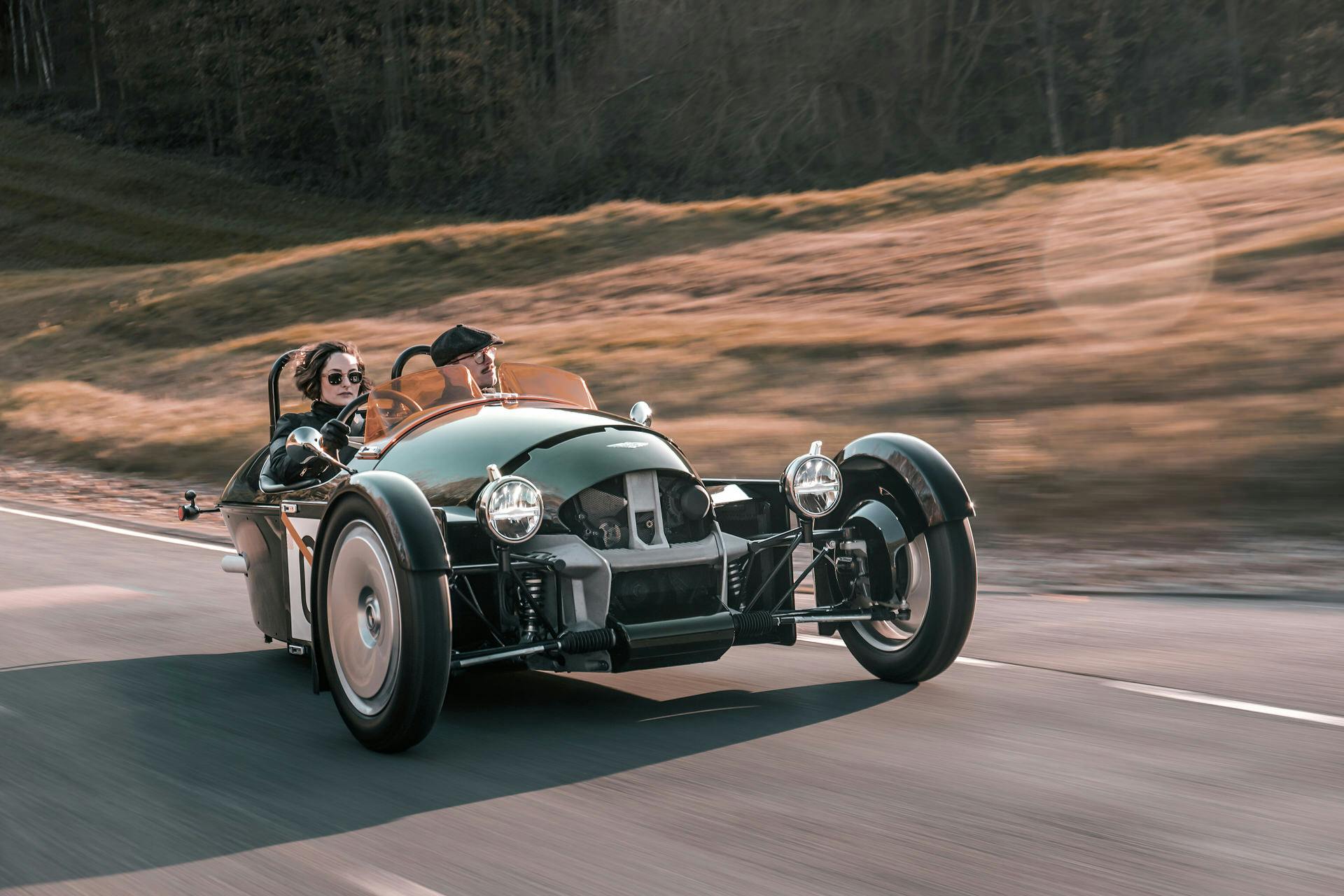
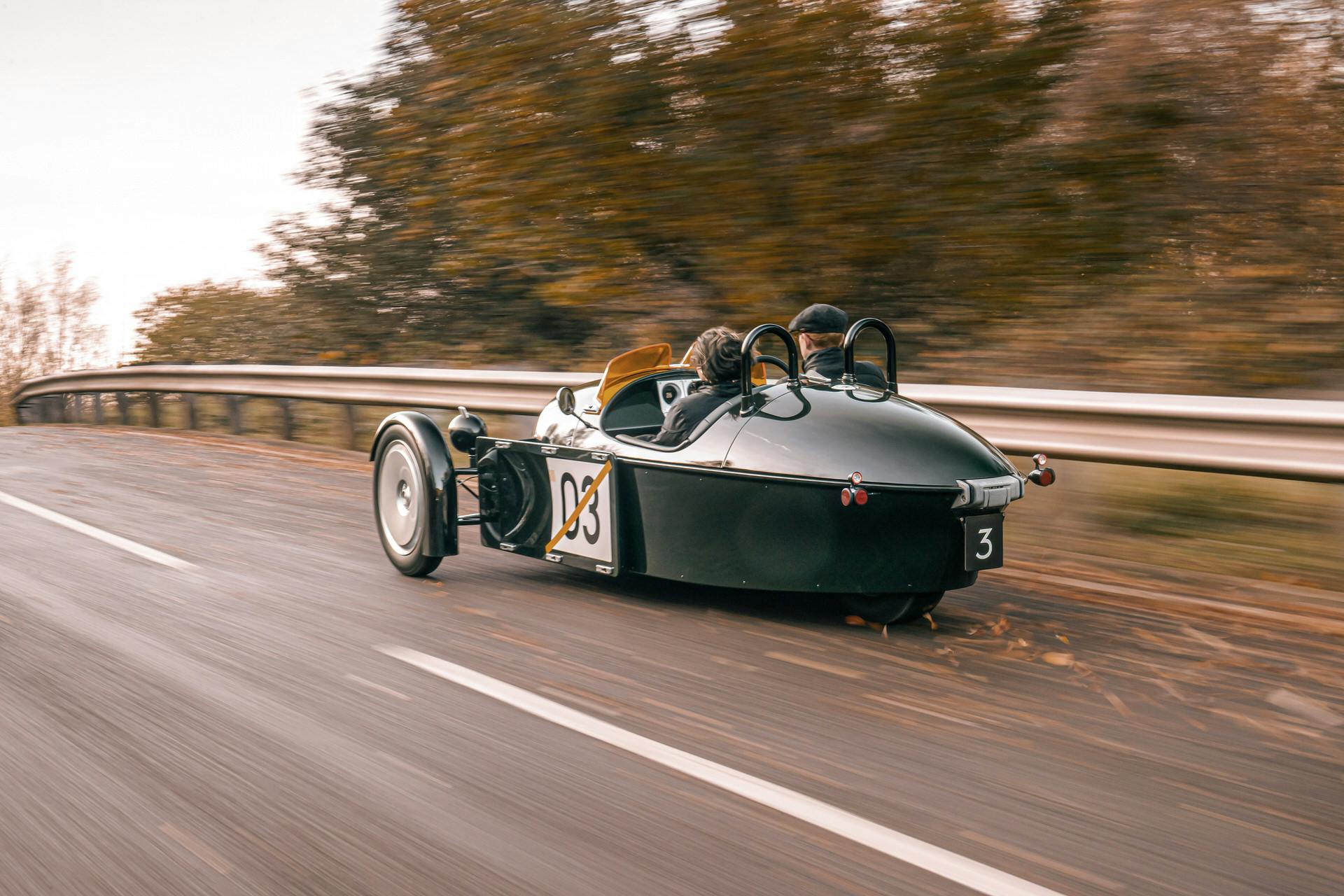


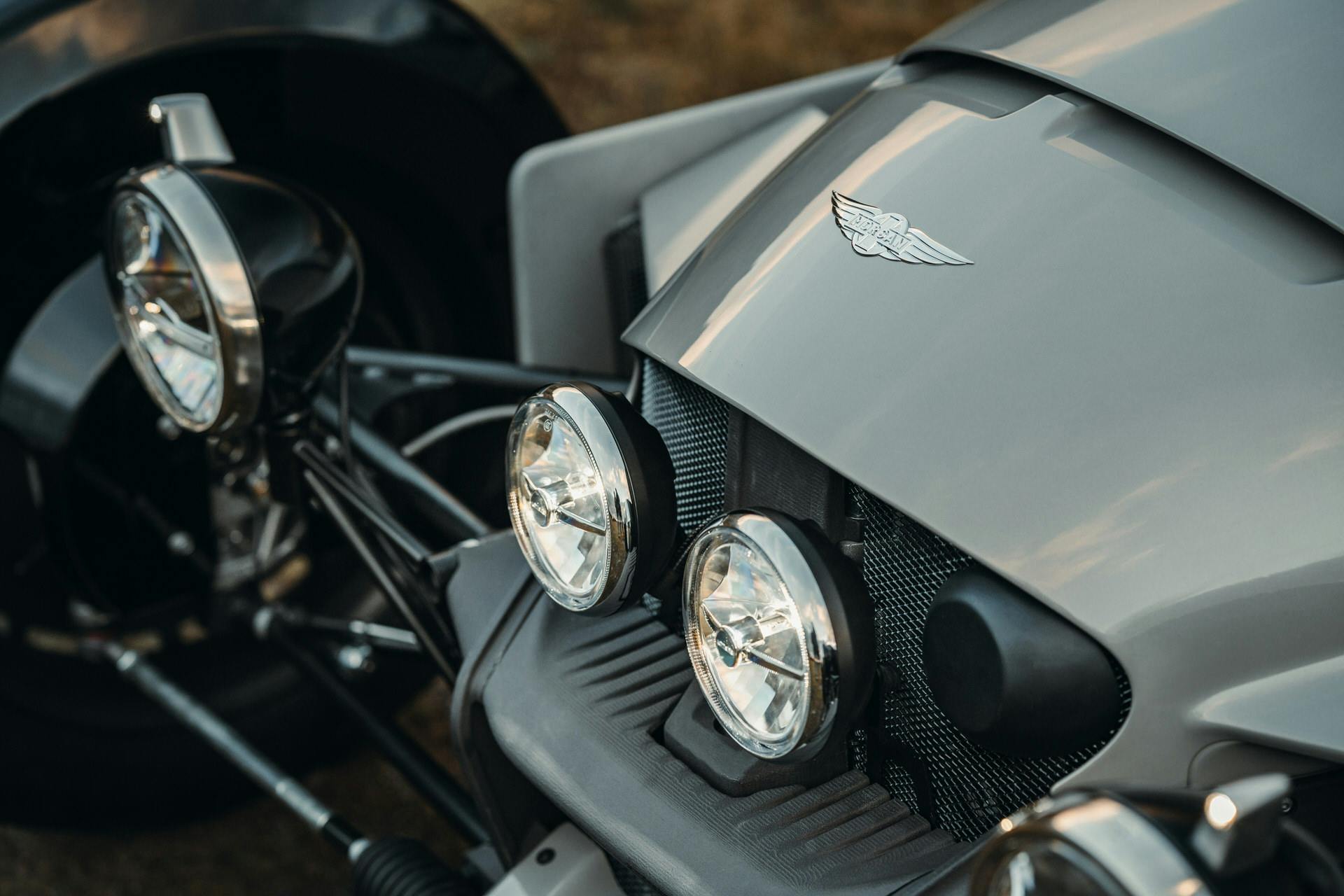
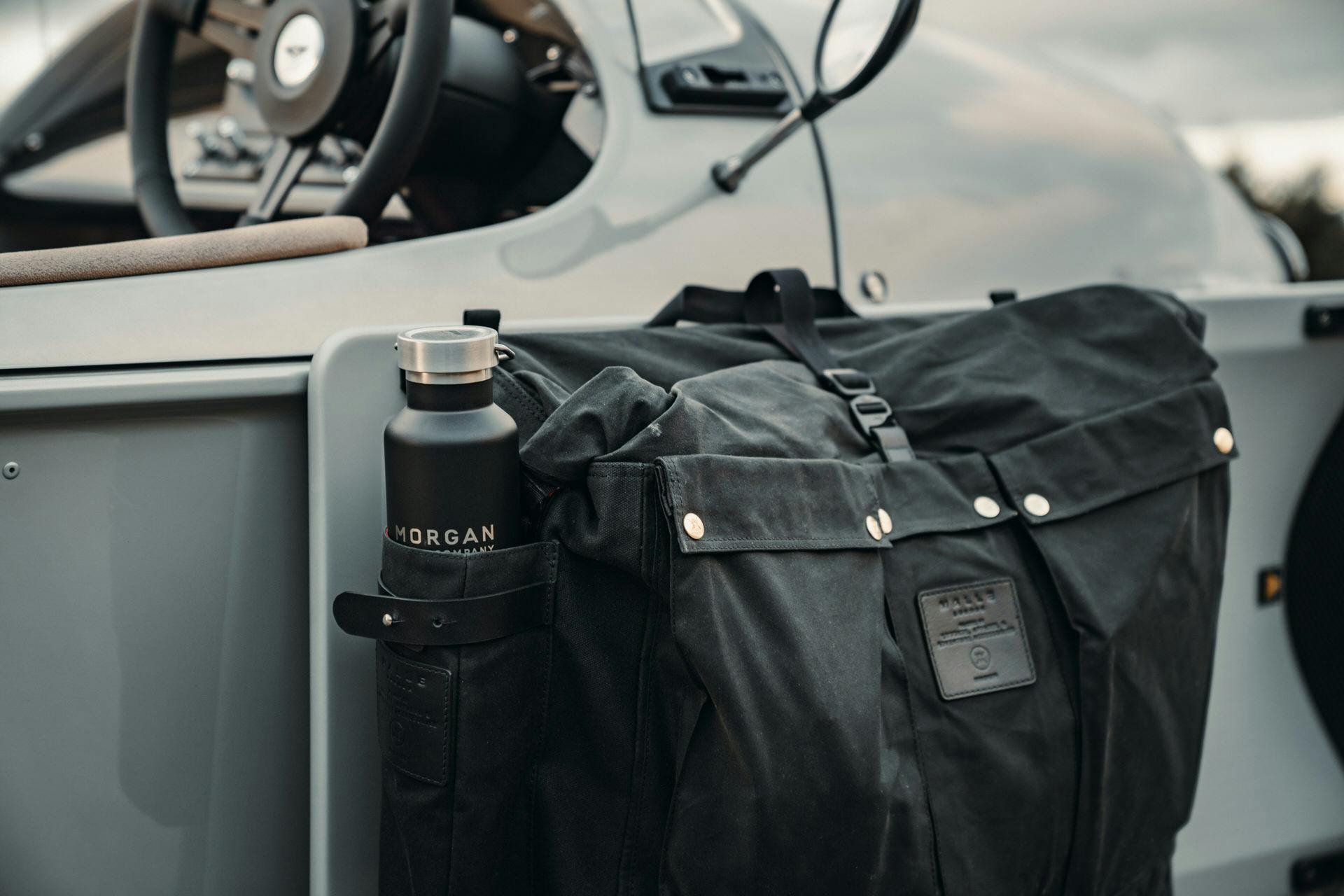
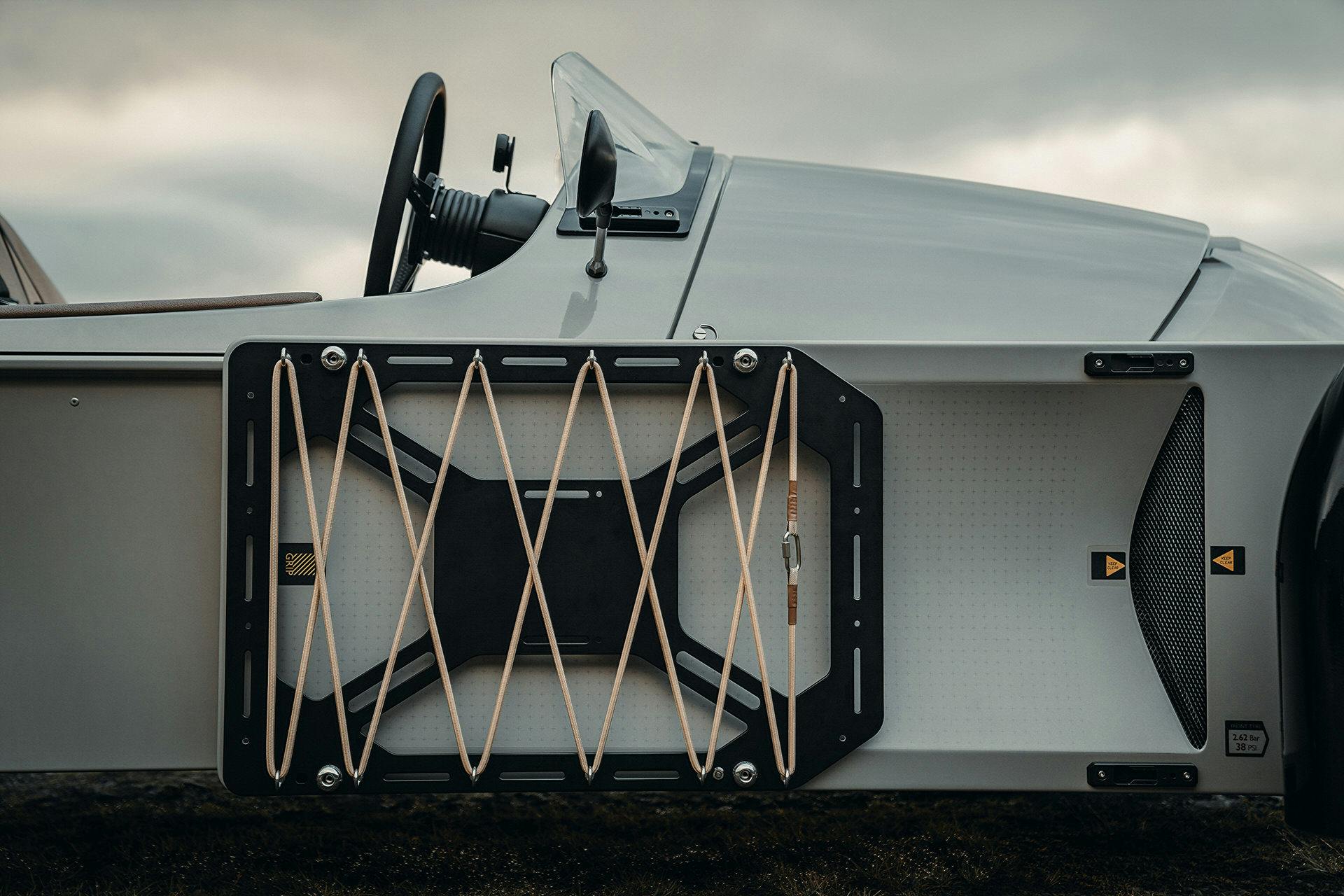
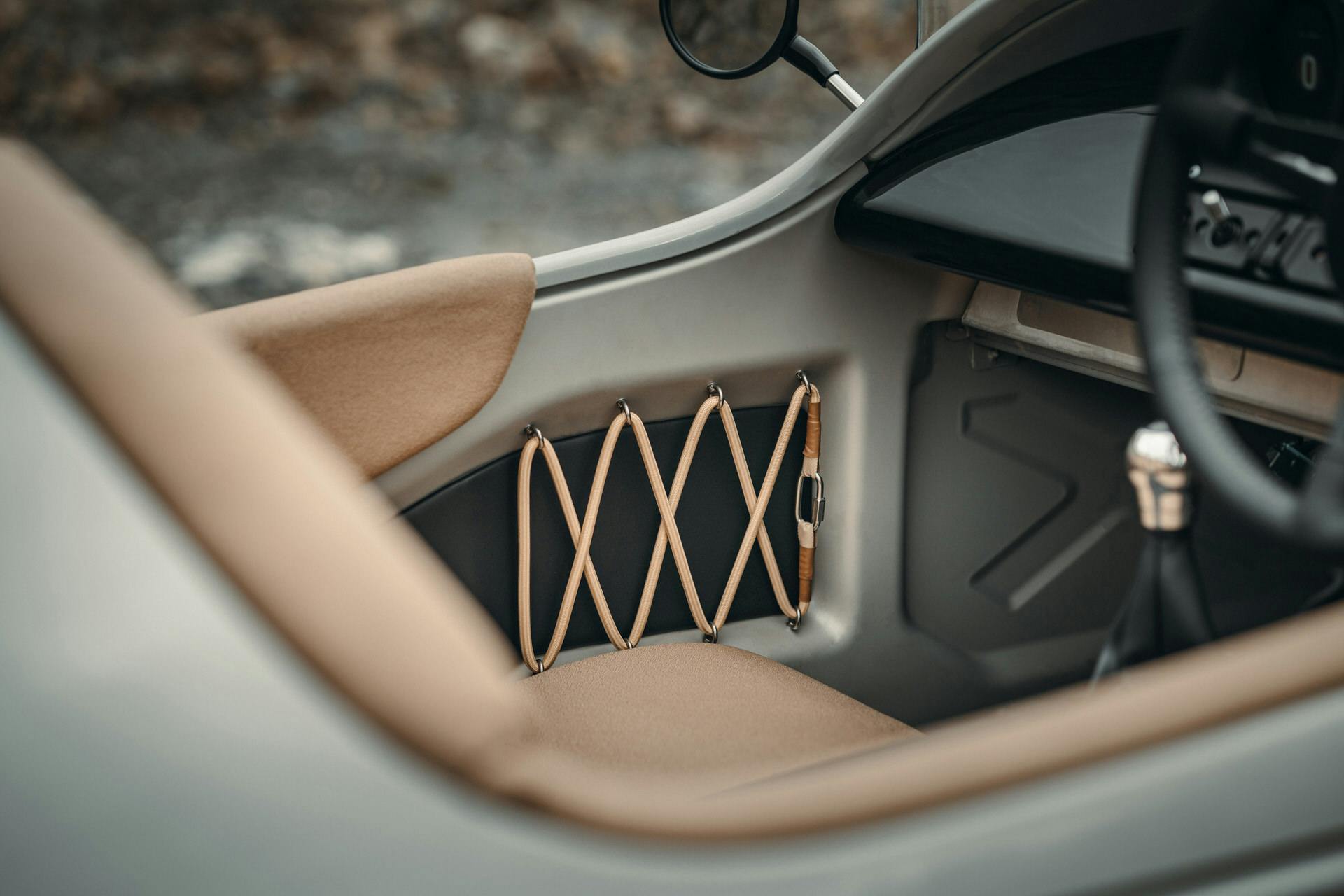
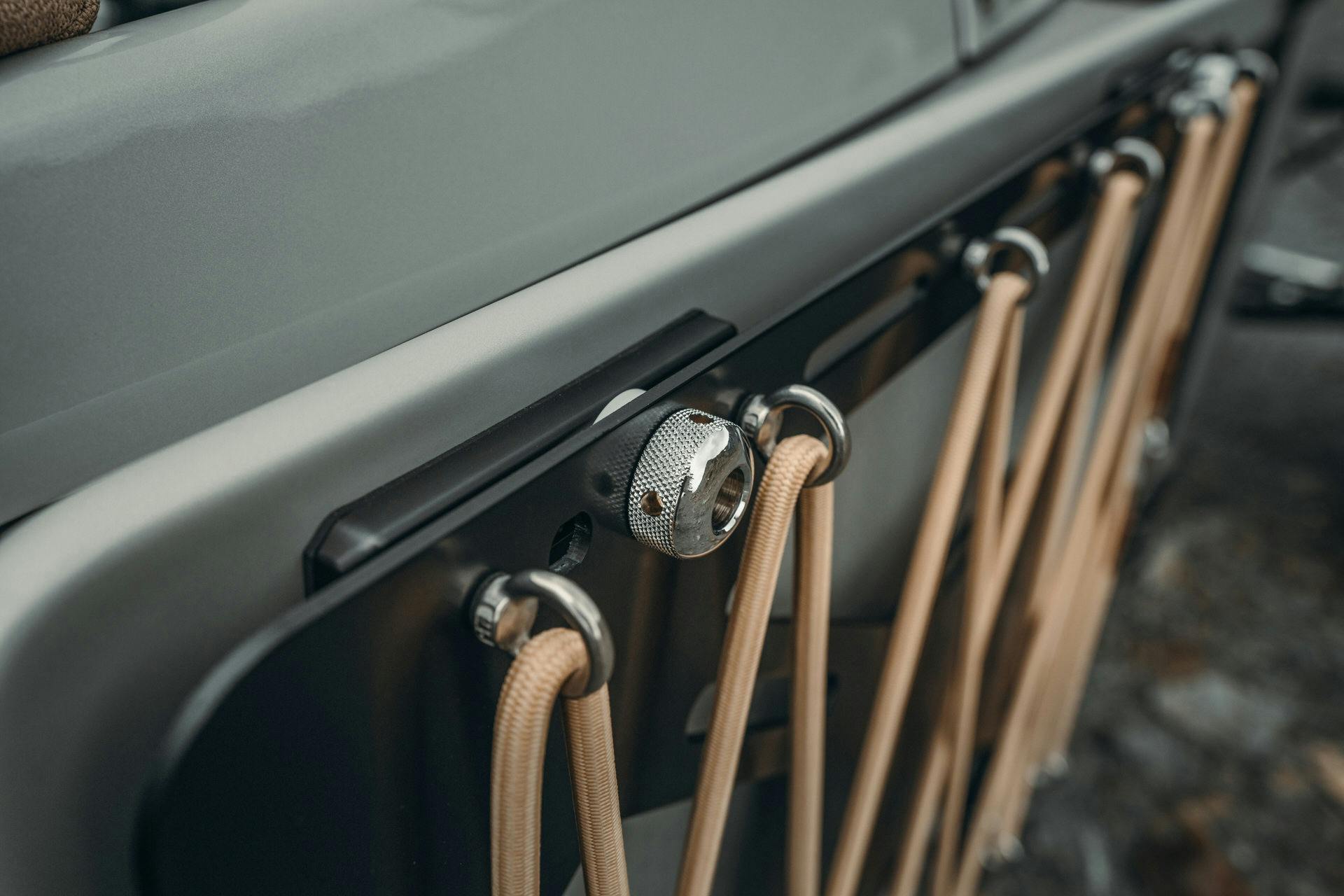
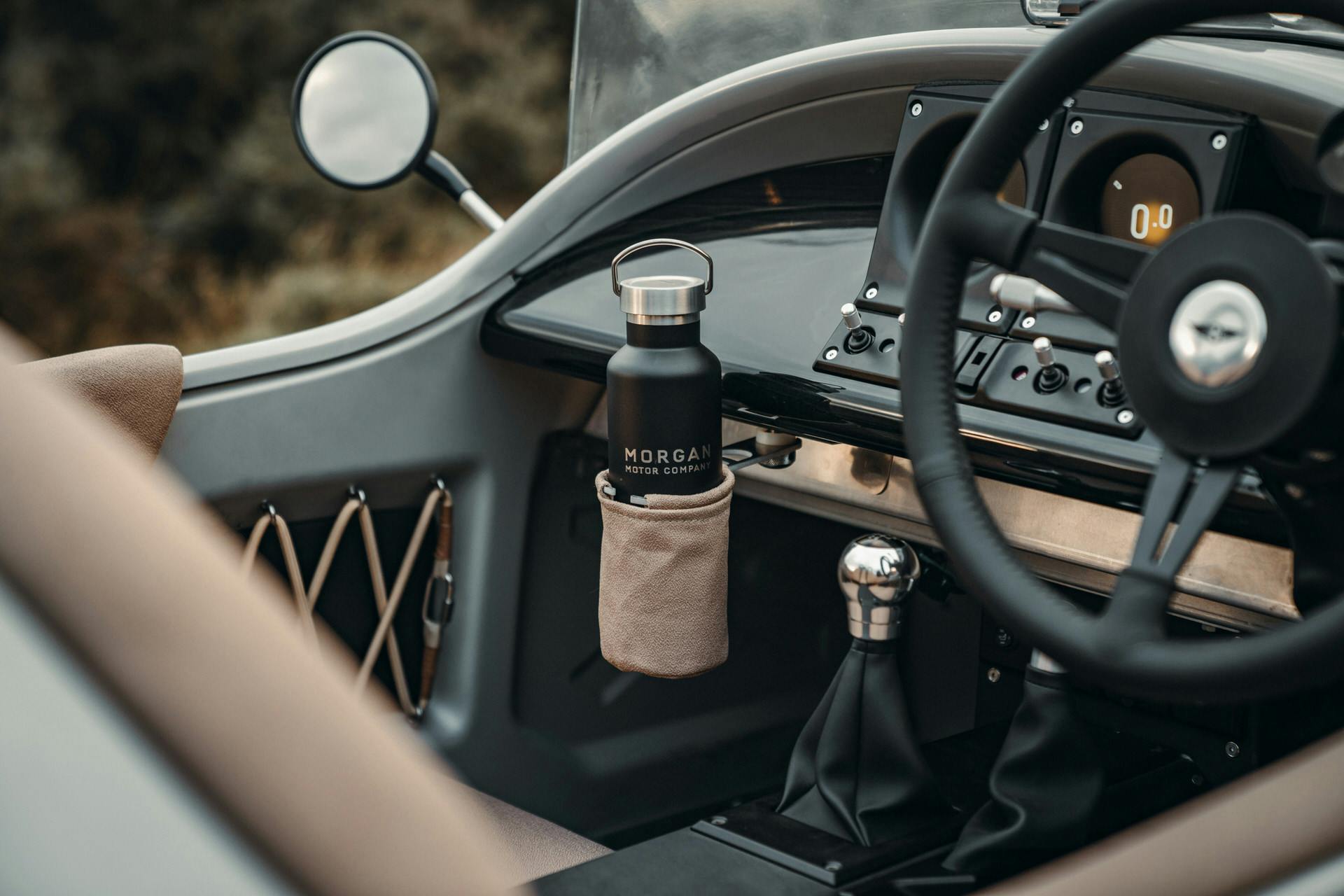
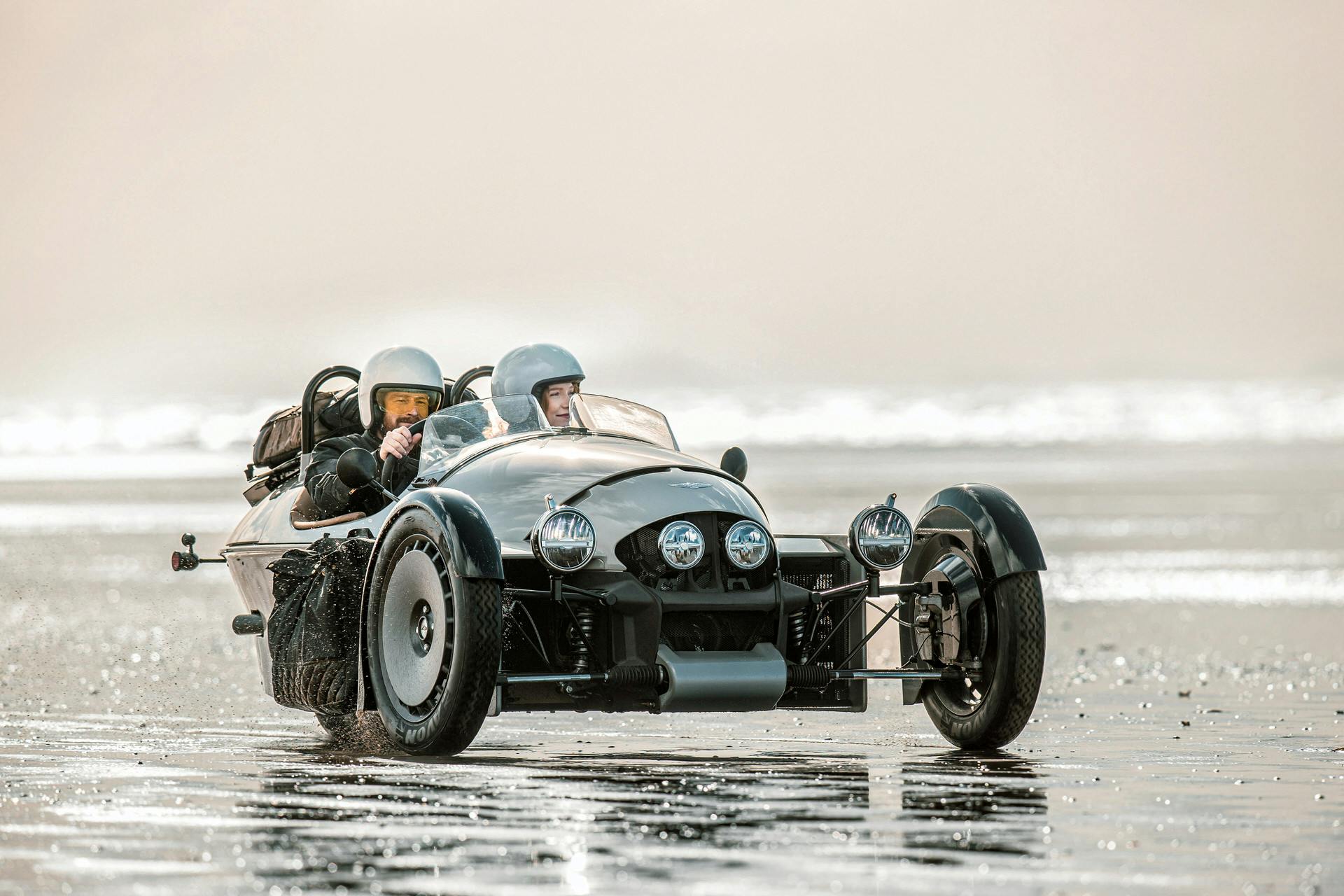
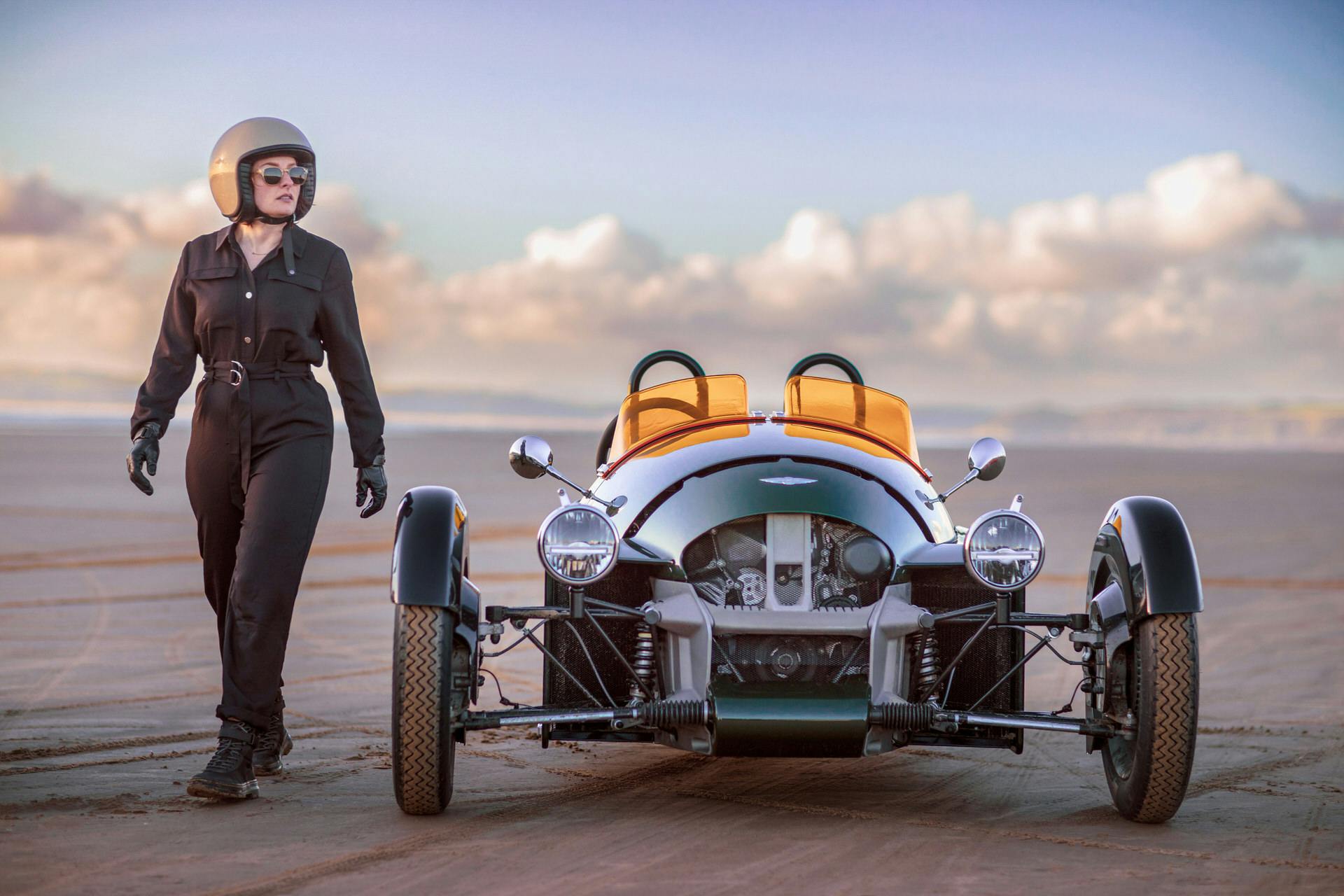

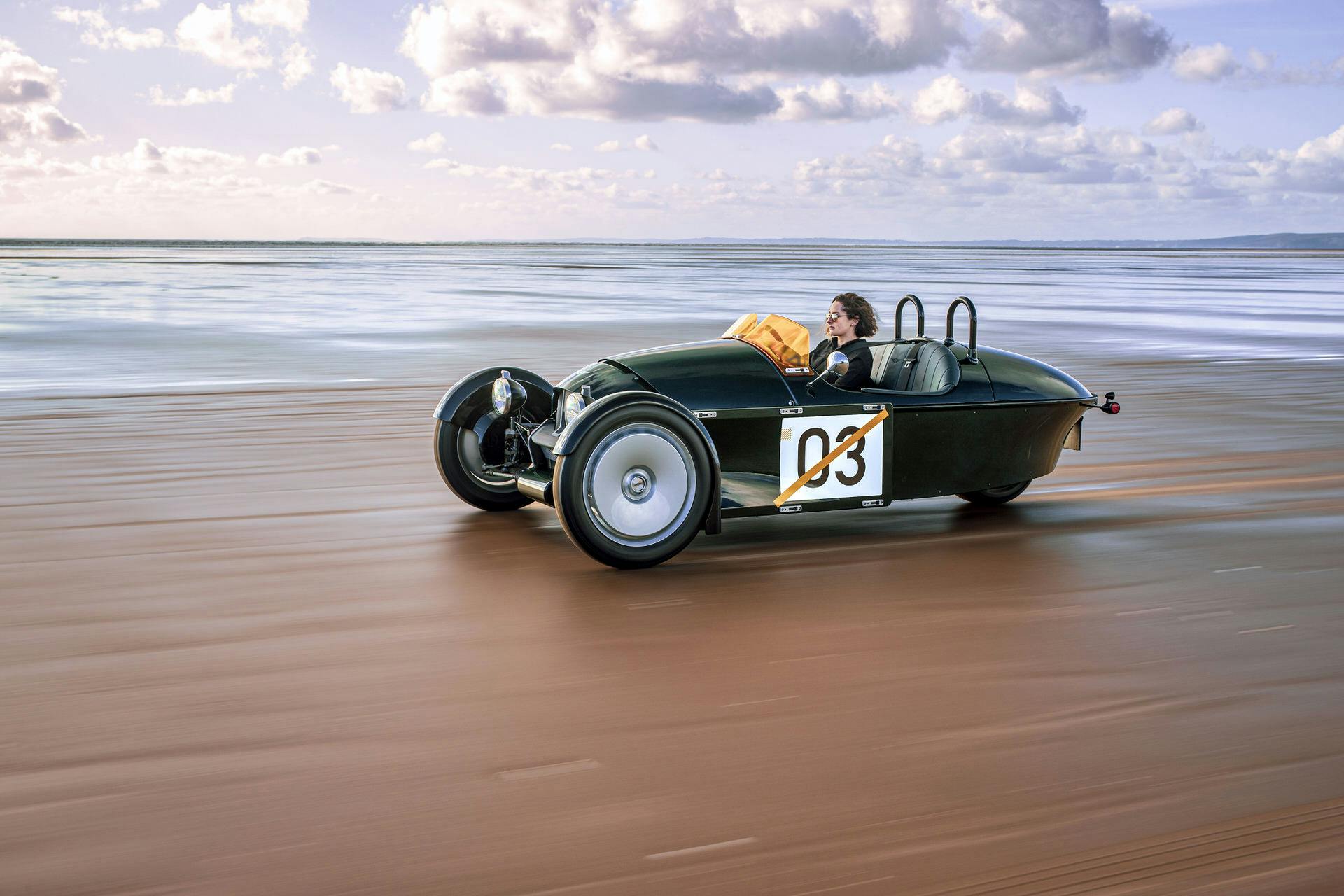
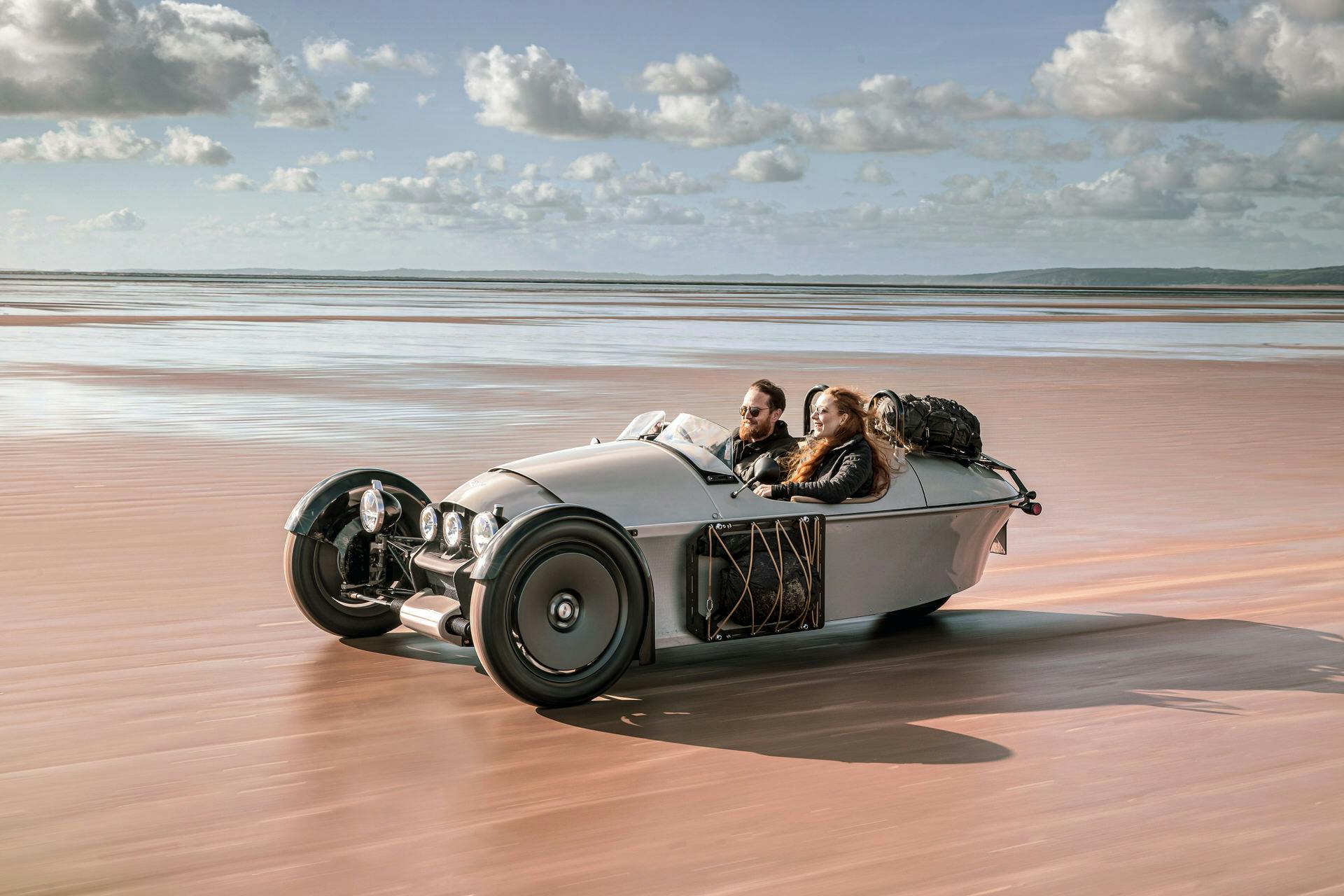
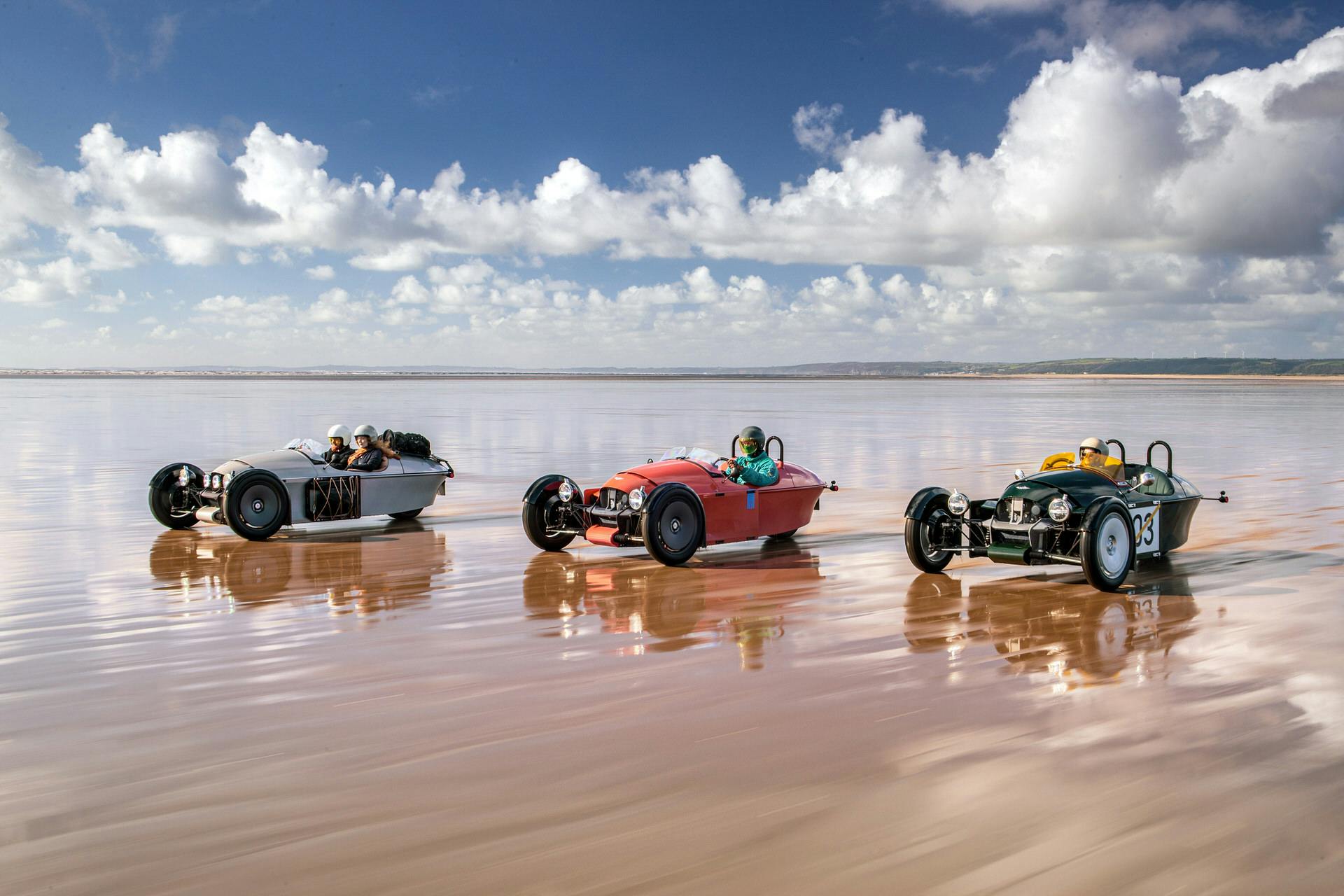
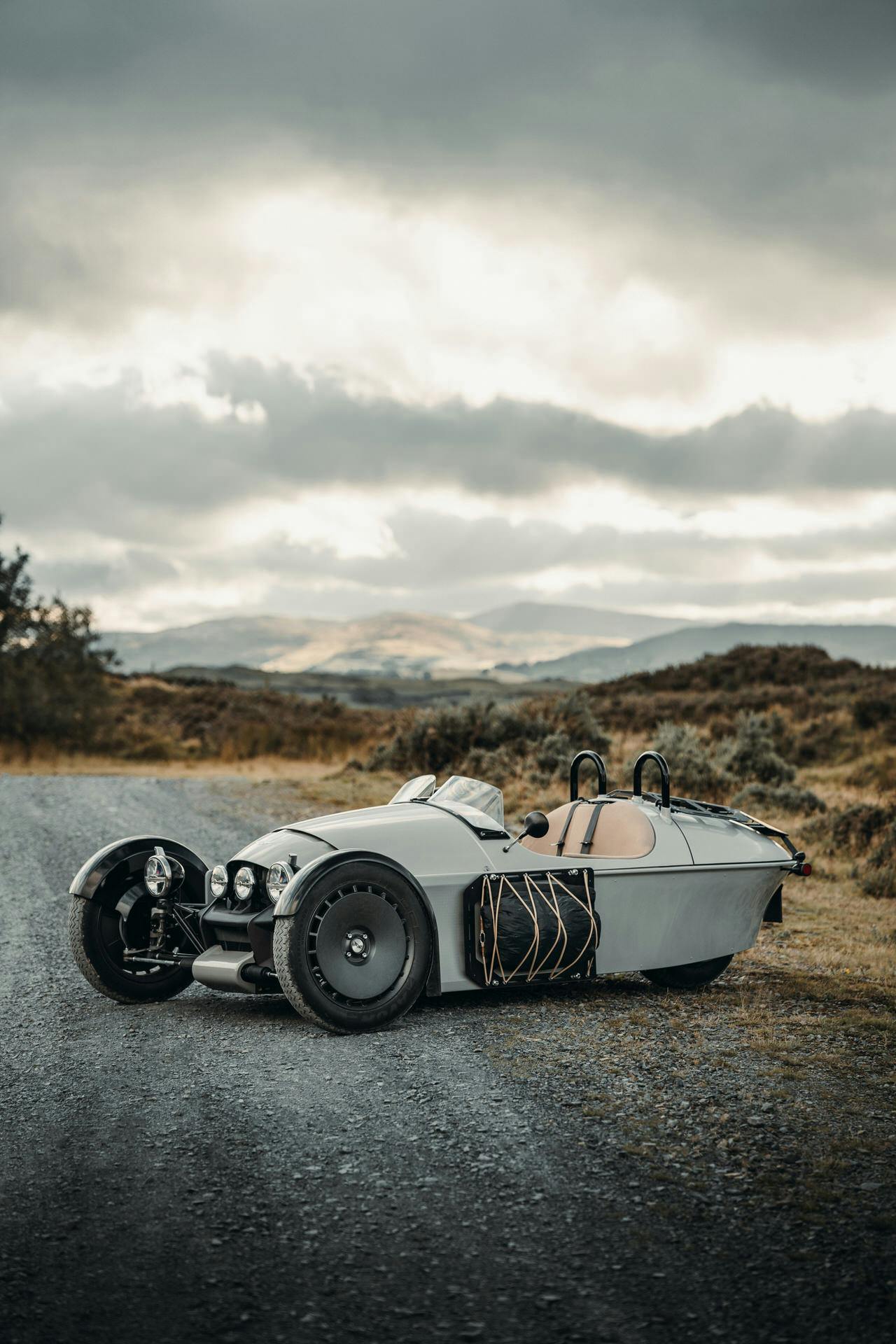
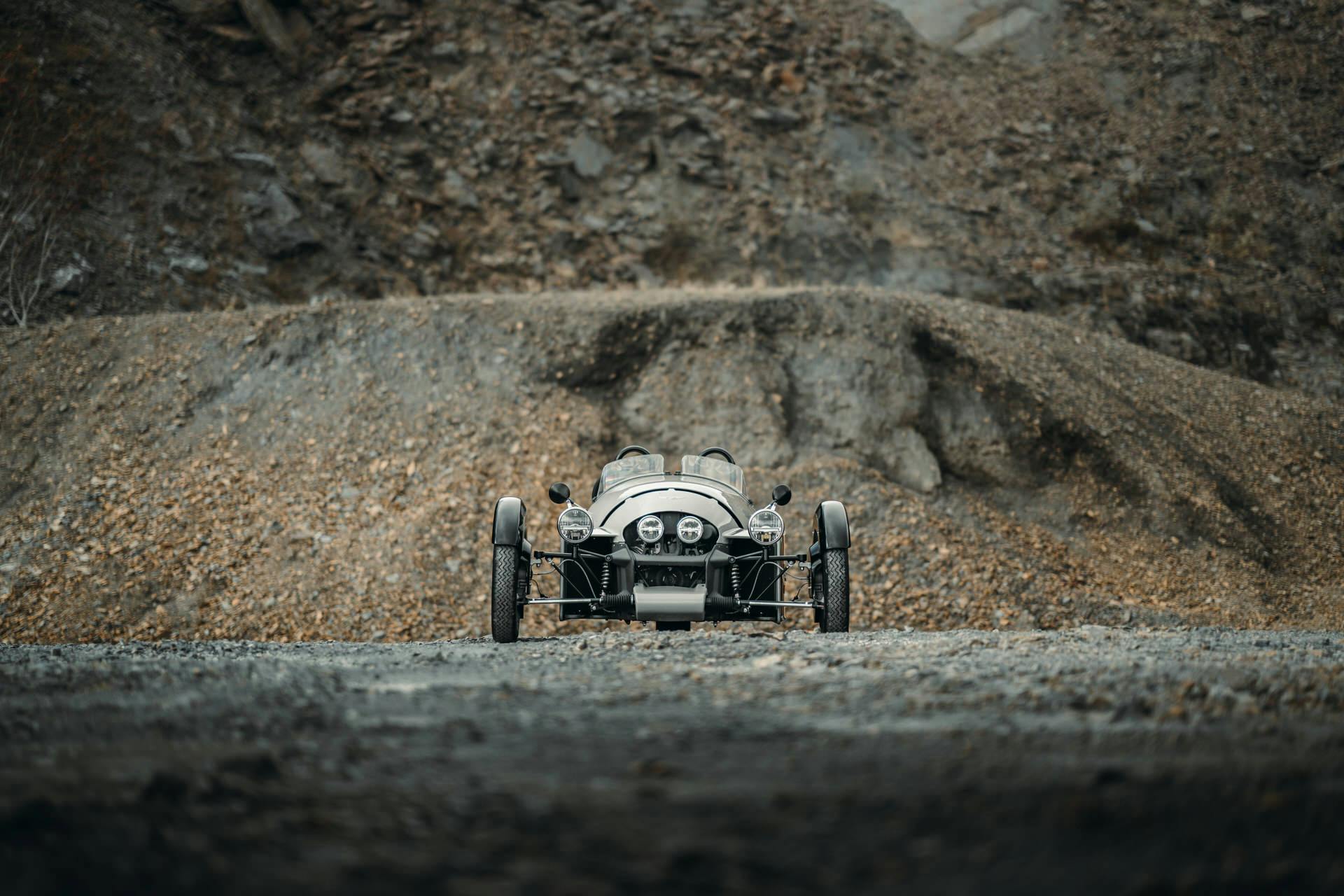
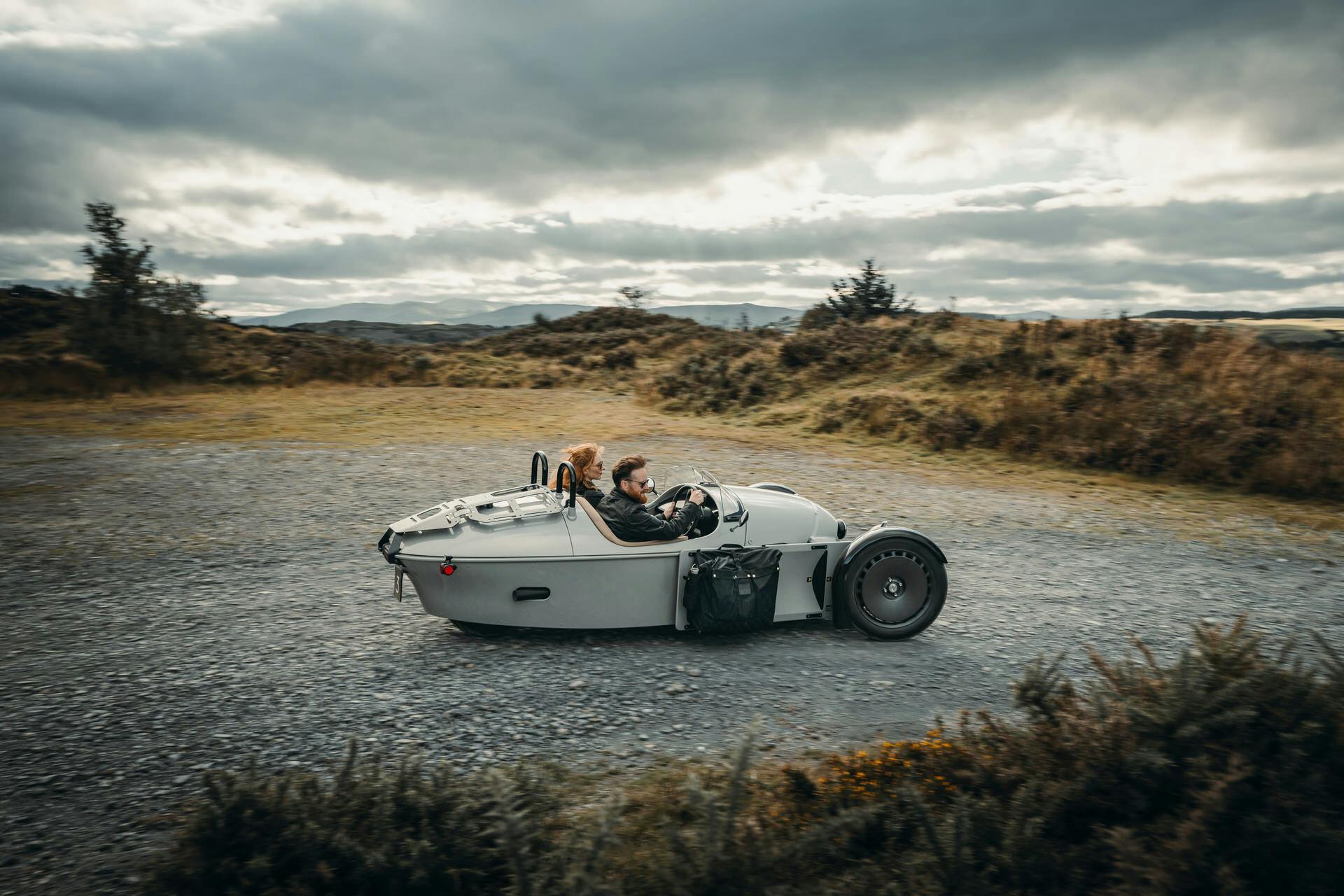
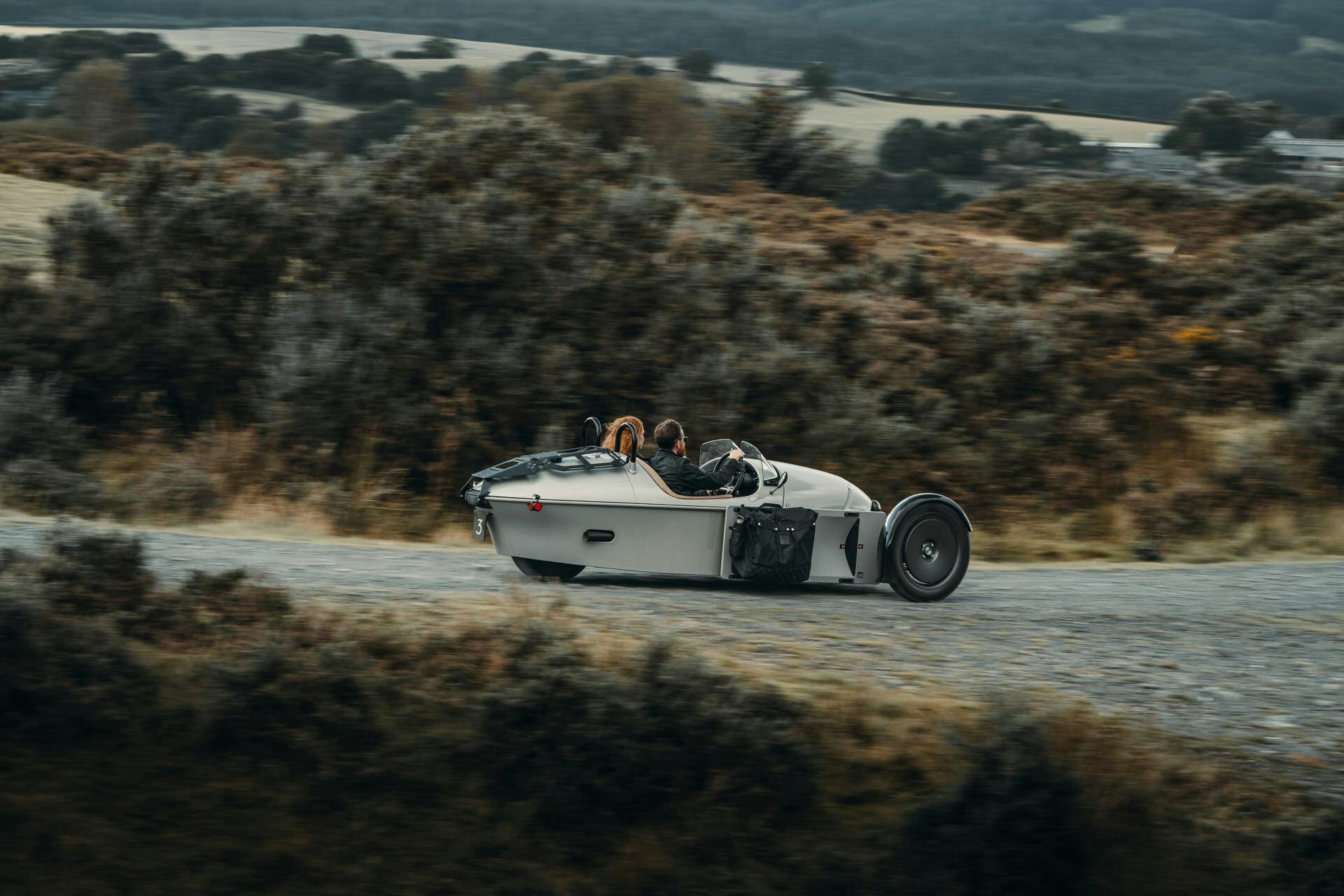
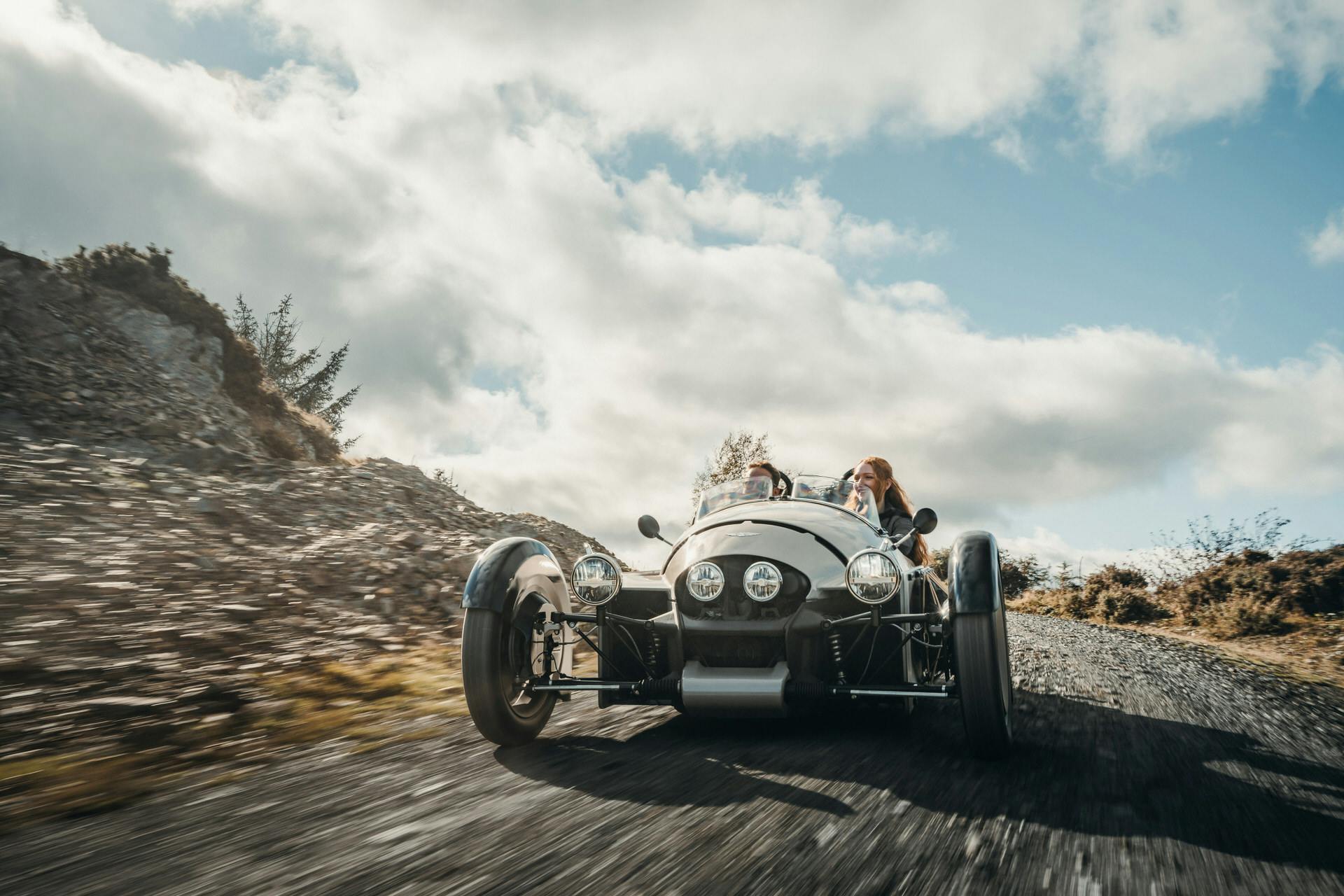
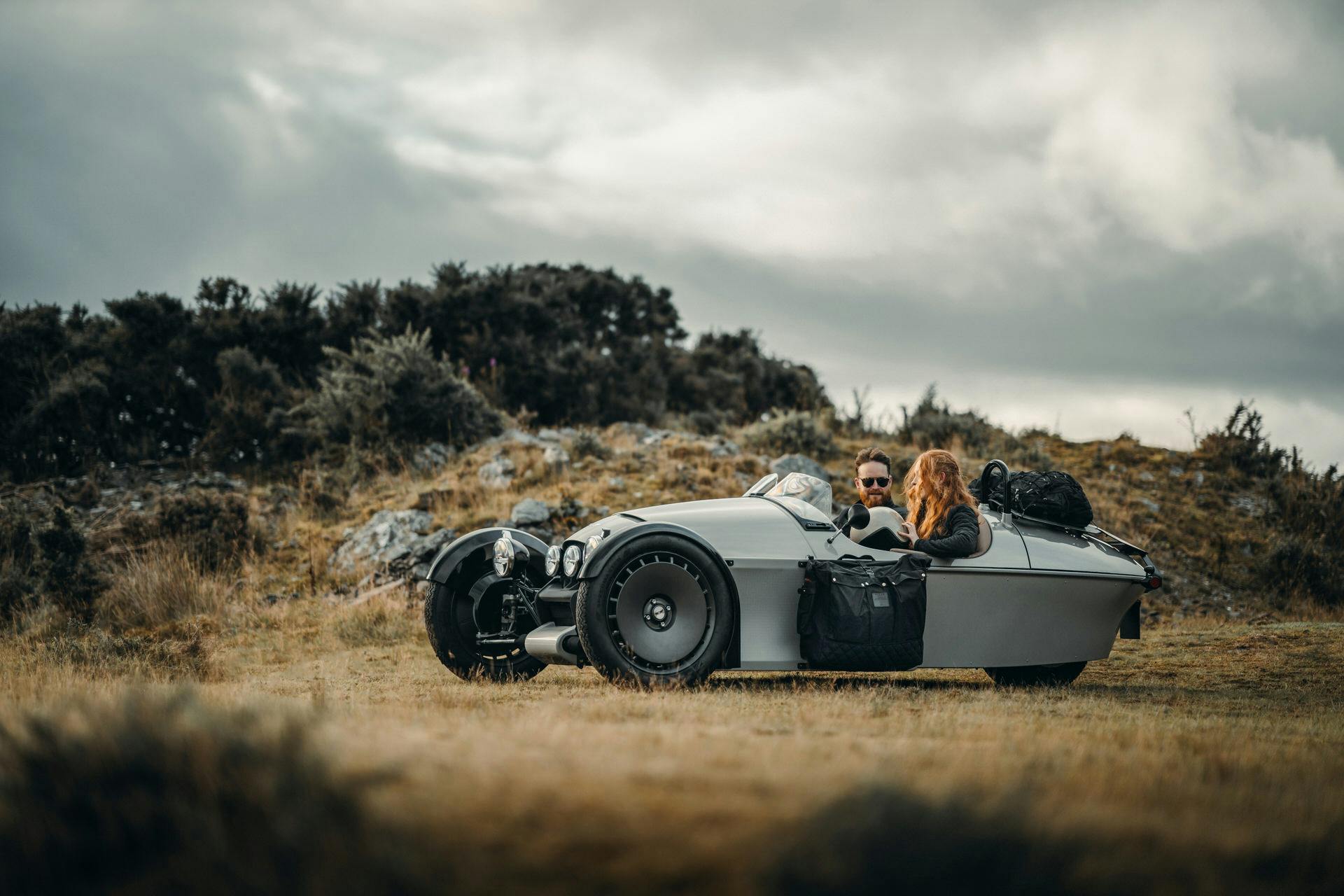
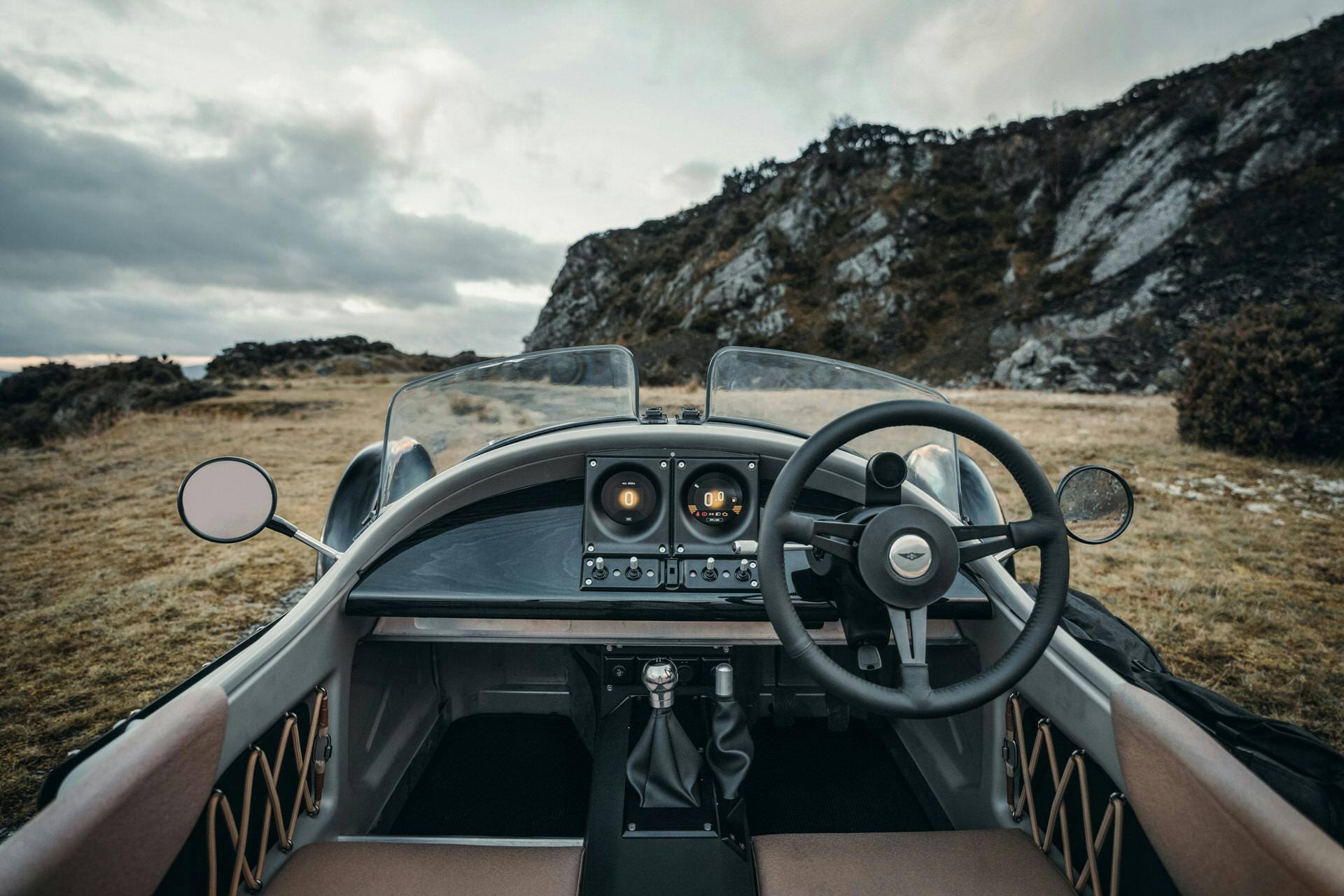
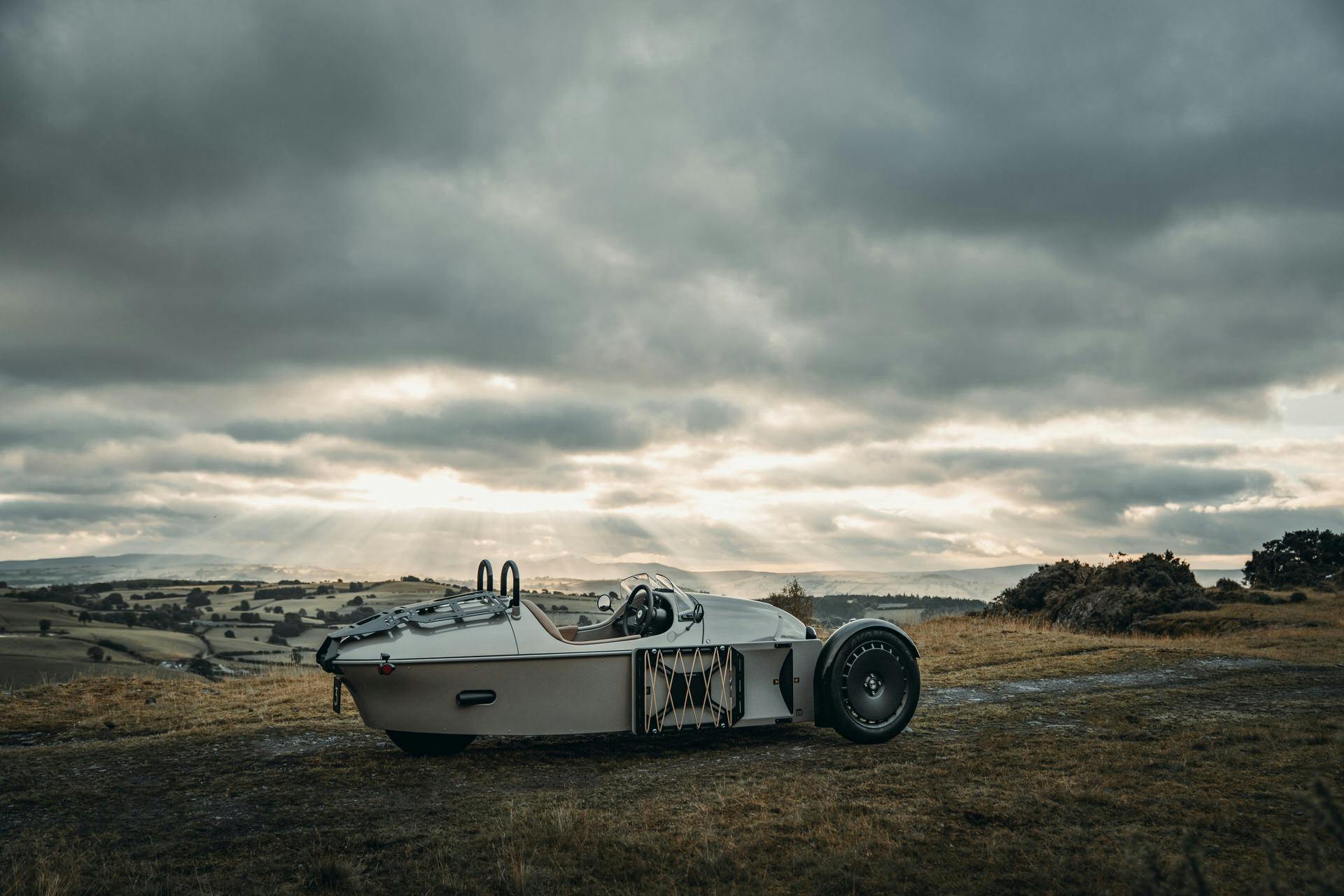
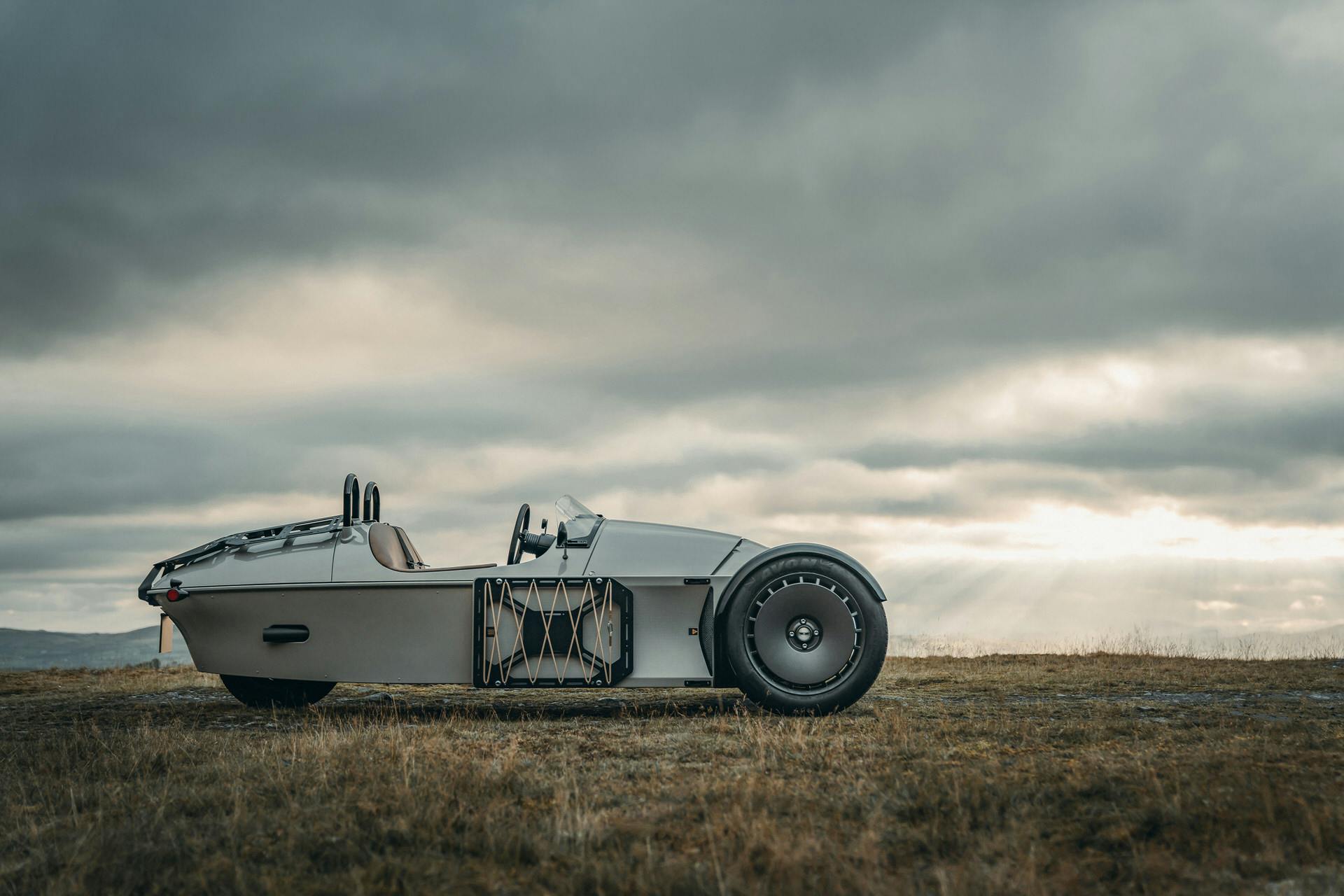
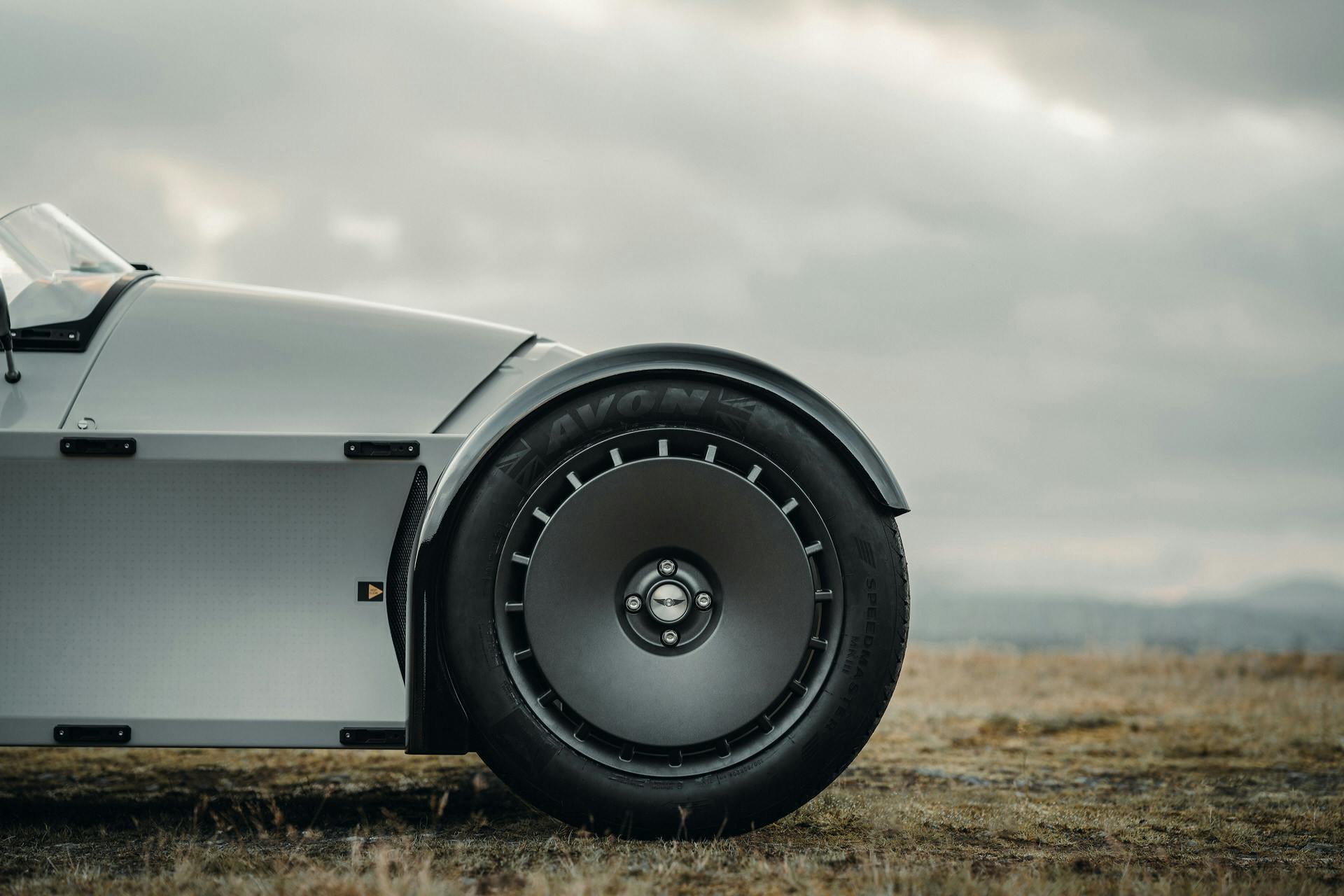


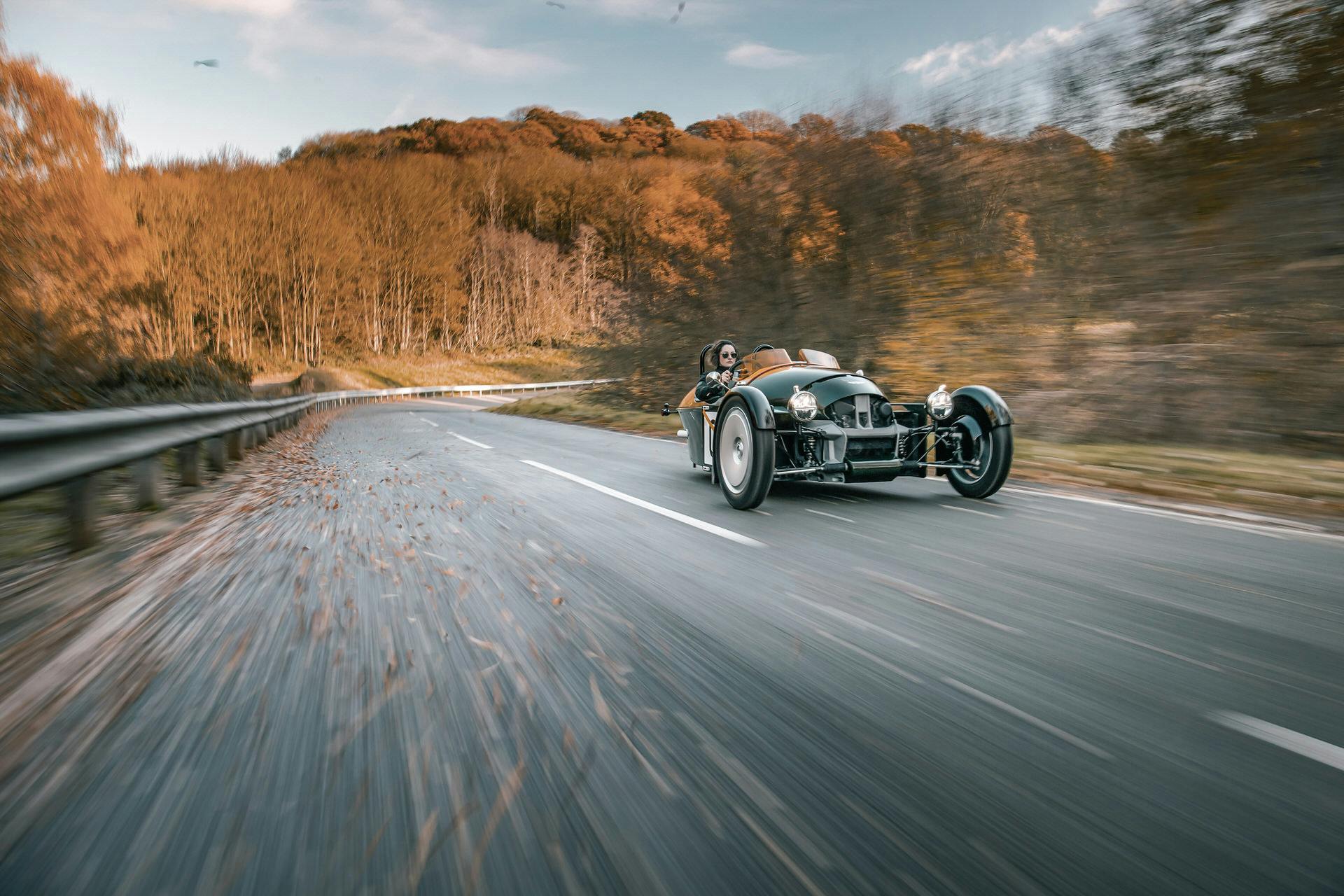
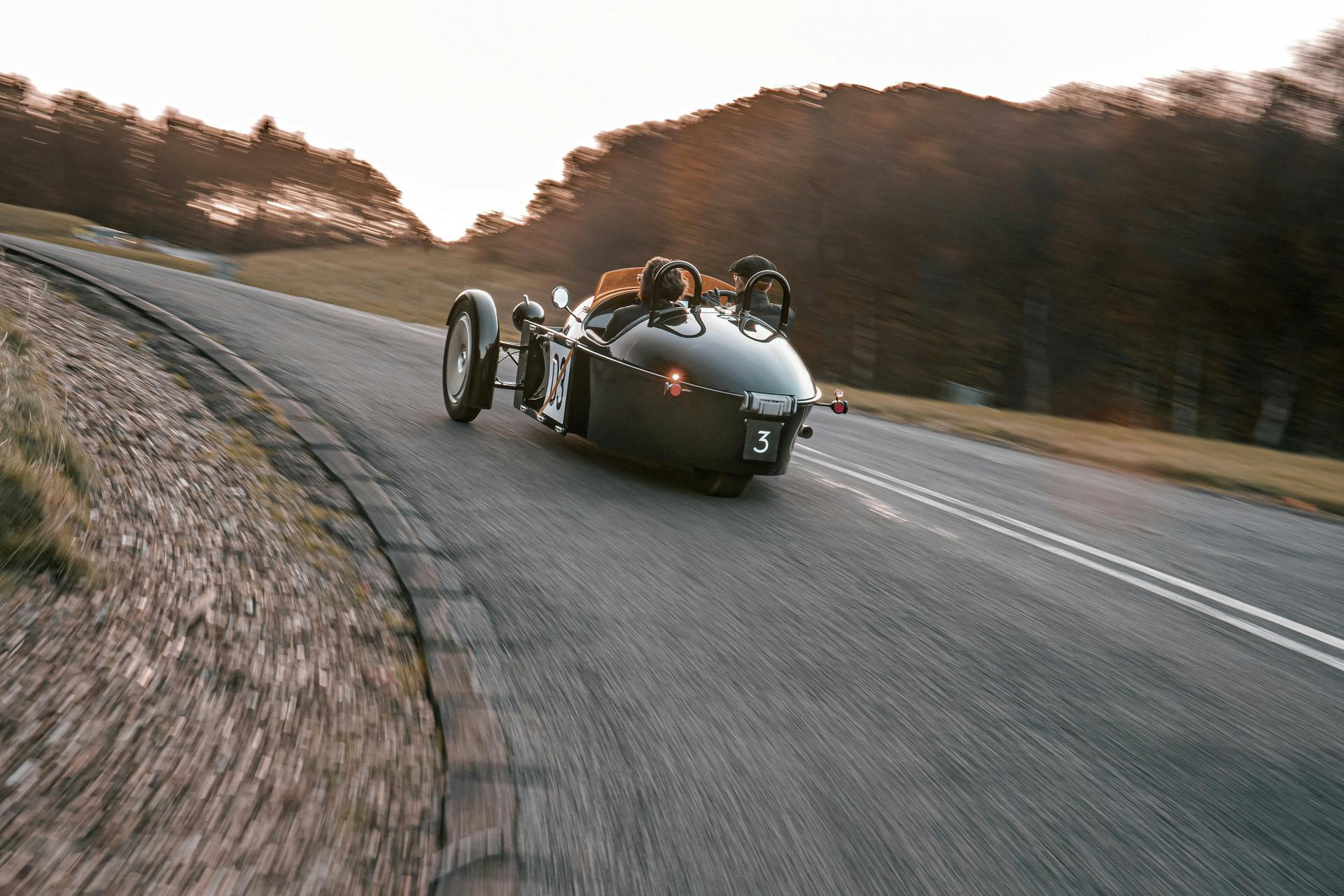


Why will Hagerty not insure this vehicle since all Morgans are collectable and rarely daily drivers?